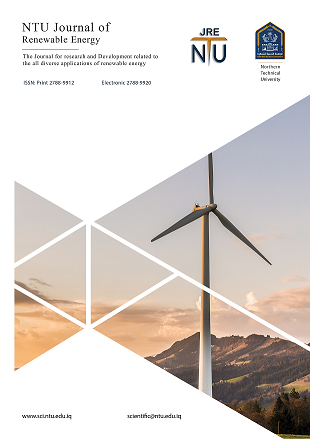Characterizing Biochar Derived from Palm Kernel Shell Biomass via Slow Pyrolysis for Adsorption Applications
DOI:
https://doi.org/10.56286/ntujre.v6i1.729Keywords:
Palm Kernel Shell, Pyrolysis, Palm Kernel Shell Biochar, CharacterizationsAbstract
This comprehensive study delves into the thorough characterization of biochar derived from palm kernel shells, with a focus on its potential as an environmentally friendly solution to tackle waste management challenges within Malaysia's agro-industry. Employing the (BET) method, the current investigation unveils an impressive specific surface area of 299.7565 m²/g, complemented by a pore size of 2.17783 nm and a substantial pore volume of 0.1632 cm³/g, attesting to its extraordinary adsorption capacity. Assessment of thermal stability through (FESEM) imaging underscores its resilience, FTIR spectroscopy unravels distinct peaks within the stretching region. XRD analysis introduces a characteristic pattern for palm kernel shell-derived biochar (PKSBC), marked by a prominent, broad peak observed at approximately 2? = 20-30º and 2? = 40-50º, indicative of crystalline and semi-crystalline phases, respectively. Elemental analysis assumes a pivotal role in assessing biochar quality, with a particular emphasis on carbon content, instrumental in identifying potential impurities or contaminants that could compromise its effectiveness in critical applications, including water treatment, air purification, and gas adsorption. This study not only underscores the substantial promise of palm kernel shell-derived biochar in addressing environmental challenges but also provides invaluable insights into its exceptional properties. These findings have the potential to redefine sustainable practices and drive environmental stewardship, offering innovative solutions to the pressing issues of our time.
Downloads
Published
Issue
Section
License
Copyright (c) 2024 NTU Journal of Renewable Energy

This work is licensed under a Creative Commons Attribution 4.0 International License.








